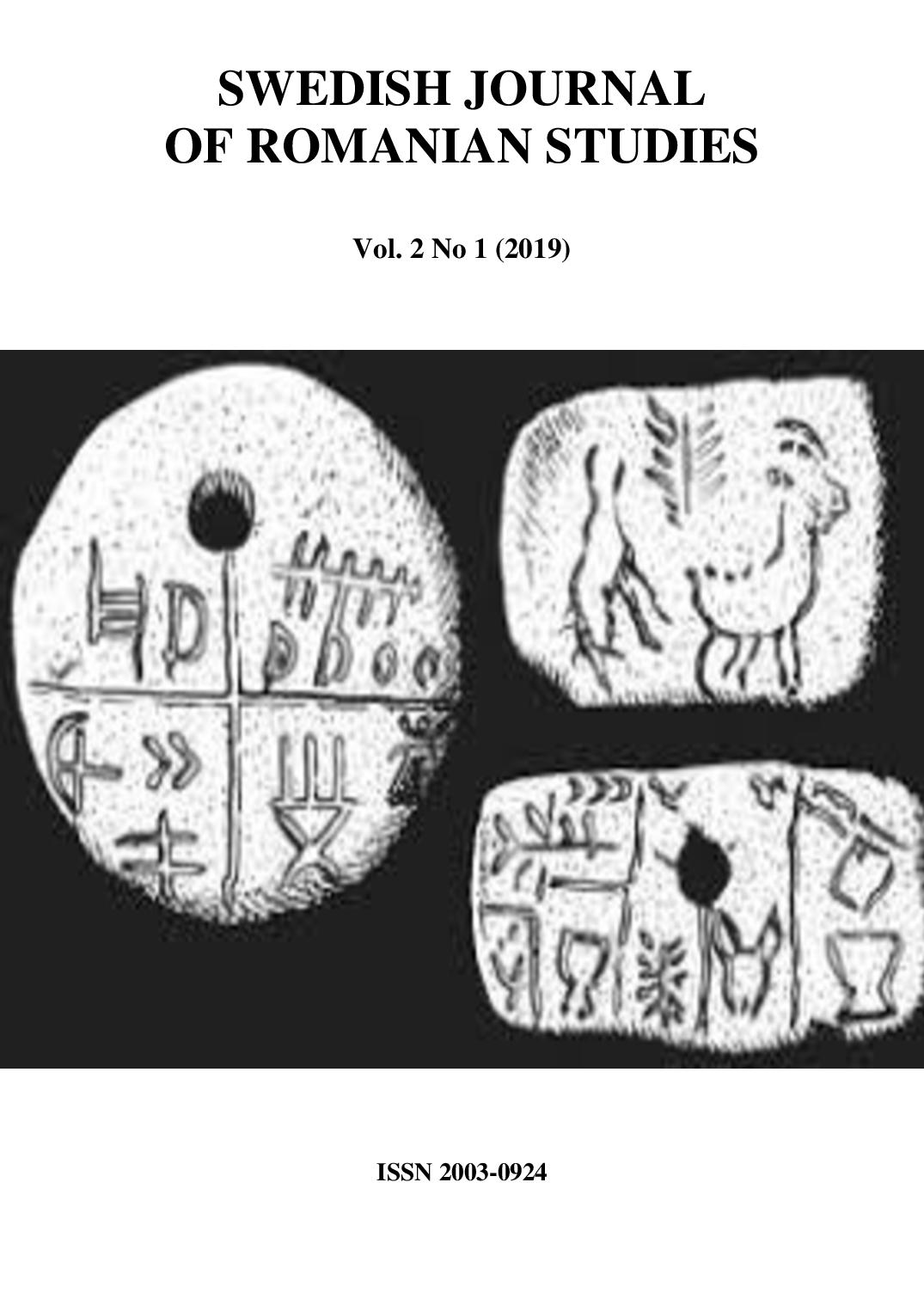The bodily community. The gesture and the rhythm as manners of the living-together
DOI:
https://doi.org/10.35824/sjrs.v2i1.18746Keywords:
bodily community, space-in-common, gesture, rhythm, Viața româneascăAbstract
The present article explores the collective imaginary of the cenacle, referring to the case of Viața românească literary group from Iași, focussing on the bodily community and its representations in the common space, understood as space-in-common. This approach shifts the interest from the ideological component that is the ‘poporanism’, as promoted by Viața românească revue, to the ethical and social aspects of the community. This does not mean that the bodily community is “more real” than the ideological community, or that it translates with fidelity the common practices of the cenacle; the bodily community is in fact another form of representation, a phantasm of the living-together, analysed through Roland Barthes’s theory as the space where solitude and sociability coexist. The corporal representations of the community, always engaged in an ethical debate, is further discussed through two manners of the living-together: the gesture and the rhythm. The theoretical reference of this analysis is Marielle Macéʼs book Styles. Critique de nos formes de vie, which proposes a formal approach of life, concentrating on the ethical implications. The issues derived from this sort of reading state the relation between the body and the environment, the vicinities and the somatic interactions between the members of the cenacle, the adjustment of distances, and the maintenance of solitude inside the community. The gestures, attitudes, behaviour, verbal and non-verbal tics, clothing, the manners of speech or the rhythm of doing certain things are seen not as marks of personal identity that positions itself inside the spaces of power, but as collective signs, as form of encounter and interaction, of exposure to the others but also responsiveness of the others, of expropriation as well as appropriation, of affirmation as well as alteration of the forms of life.
References
Barthes, R. (2002). Comment Vivre Ensemble: Simulations romanesques de quelques espaces quotidiens/ How to Live Together: Novelistic Simulations of Some Everyday Spaces (Claude Coste, ed., Éric Marty, pref.). Seuil/IMEC.
Butler, J. (2016). We, the People, in What Is a People?, trans. Jody Gladding. New York: Columbia University Press. (Original work published 2013).
Botez, D. (1970). Memorii/ Memoirs. București: Minerva
Cuzmici, L. (2015). Generația Albatros – o nouă avangardă/ The Albatros Generation – a New Avant-garde. Iași: Editura Universității „Alexandru Ioan Cuza”.
Glinoer, A., Laisney, V. (2013). Lʼâge de cénacle. Confraternités littéraires et artistiques au XIXe siècle/ The Time of the Cenacle. Literary and Artistic Confraternities in the 19th Century. Paris: Fayard.
Lacroix, M., Pinson, G. (2006). Liminaire/ Introduction. Tangence, 80, 5–17.
Leroi-Gourhan, A. (1983), Gestul și cuvântul/ Gesture and Speech, vol 2: Memoria și ritmurile/ Memory and Rhythm (Maria Berza, trans., pref. Dan Cruceru, pref.). București: Meridiane. (Original work published 1964-1965).
Macé, M. (2016). Styles. Critique de nos forms de vie/ Styles. A Critique of Our Forms of Life . Paris: Gallimard.
Mauss, M. (2002). Les techniques du corps/ Techniques of the Body, electronic edition by Jean-Marie Tremblay, available at http://classiques.uqac.ca/classiques/mauss_marcel/socio_et_anthropo/6_Techniques_corps/Techniques_corps.html, seen in April 9 2019. (Original work published in 1936). https://doi.org/10.1522/cla.mam.tec
Meizoz, J. (2007). Postures littéraires. Mises en scène modernes de l´auteur/ Literary Postures. Modern Staging of the Author, Genève: Slatkine Érudition.
Mironescu, D. (2016). Un secol al memoriei. Literatură și conștiință comunitară în epoca romantică/ A Century of Memory. Literature and Collective Conscience in Romanticism. Iași: Editura Unversității „Alexandru Ioan Cuza”.
Pavel, L., Tudurachi, L., coord. (2016). Dacoromania litteraria: Usages de la communauté. Théories et pratiques collaboratives/ Uses of the Community. Collaborative Theories and Practices, 3. https://doi.org/10.33993/dlr
Puia-Dumitrescu, D. (2015): O istorie a cenaclului de luni/ A History of the Literary Circle of Monday. București: Cartea Românească.
Sevastos, M. (2015). Amintiri de la „Viața românească”/ Memories from “Viața românească” circle. Iași: Polirom.
Teodoreanu, I. (1947). Masa umbrelor/ The Table of Shadows. București: Forum.
Tudurachi, L. (2015). Comunitate literară și anonimat/ Literary Community and Anonimity. Anuar de lingvistică și istorie literară, LV, 151-158.
Tudurachi, L. (2017). „Afecțiunea” erotică de cenaclu/ The Erotic “Affection” of the Cenacle. Caietele Sextil Pușcariu, III, 574-583.
Tudurachi, L. (2018). Plânsul de cenaclu/ Cenacleʼs Cry. Phylologica Jassyensia, 1(27), 131-143.
Downloads
Published
How to Cite
Issue
Section
License
Copyright (c) 2019 Maricica Munteanu

This work is licensed under a Creative Commons Attribution-NonCommercial 4.0 International License.
Authors who publish with this journal agree to the following terms:
a. Authors retain copyright and grant the journal right of first publication with the work simultaneously licensed under a Creative Commons Attribution-NonCommercial 4.0 International License that allows others to share the work with an acknowledgement of the work's authorship and initial publication in this journal.
b. Authors are able to enter into separate, additional contractual arrangements for the non-exclusive distribution of the journal's published version of the work (e.g., post it to an institutional repository or publish it in a book), with an acknowledgement of its initial publication in this journal.
c. Authors are permitted and encouraged to post their work online (e.g., in institutional repositories or on their website) prior to and during the submission process, as it can lead to productive exchanges, as well as earlier and greater citation of published work (See The Effect of Open Access).

